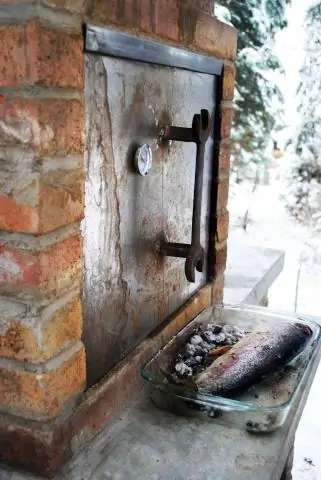
Table of contents:
- Author Bailey Albertson [email protected].
- Public 2023-12-17 12:53.
- Last modified 2025-06-01 07:32.
DIY bricklaying oven

Today, numerous manufacturers of solid fuel heating equipment offer us the widest range of metal stoves and boilers, which is replenished with new and new models from year to year. But despite all their advantages, the owners of non-gasified houses still retain the honor of an ordinary brick stove - this is evidenced by numerous reviews on thematic forums. What is the reason for the truly popular love for this unit? Our article will not only give an answer to this question, but also acquaint the reader with various types of furnaces and the technology of building a brick type with their own hands.
Content
-
1 Advantages and disadvantages of a brick oven in the house
1.1 Application of brick ovens
-
2 Types of structures
- 2.1 Dutch
- 2.2 Swedish machine
- 2.3 Bell furnace
- 2.4 Russian stove-bed
- 3 General arrangement of the furnace, drawing
-
4 Preparation for construction
- 4.1 Required materials, selection
- 4.2 Tool
- 4.3 Sizing a simple heater
- 4.4 Choice of location, scheme
-
5 Step by step instructions
- 5.1 Masonry rules in accordance with the order
- 5.2 How to make a heating unit with your own hands
- 5.3 Features of the formation of the arch
-
6 Rules and nuances of operation
6.1 Cleaning (incl. From soot)
- 7 Video: how to fold the oven with your own hands
Advantages and disadvantages of a brick oven in the house
So, let's try to understand why an ancient heating device is often more preferable than its modern high-tech counterparts. There are several reasons:
- The furnace body is an excellent heat accumulator: Due to this property, a brick furnace has to be heated much less often than a conventional steel and even cast iron furnace. Some varieties keep heat up to 24 hours, while firewood needs to be thrown into the firebox of a metal stove every 4-6 hours.
- The ability to accumulate heat makes the brick oven more economical and less harmful to the environment than its metal "substitutes". The fuel burns in it in the optimal mode - with the highest heat transfer and almost complete decomposition of organic molecules into water and carbon dioxide. The resulting excess heat is absorbed by the brickwork and then gradually transferred to the room.
- The outer surface of the oven does not heat up to high temperatures.
Due to this, the heat radiation generated by this unit is softer than that of hot steel stoves. In addition, on contact with hot metal, the dust contained in the air burns up, emitting harmful volatile substances (this can be recognized by the characteristic unpleasant odor). Of course, they cannot be poisoned, but they certainly do harm to health.
A brick oven (this does not apply to stone) emits steam when heated, and when it cools, it absorbs it again. This process is called oven breathing. Thanks to him, the relative humidity of the heated air always remains at a comfortable level - within 40-60%. When operating any other heater that is not equipped with a humidifier, the relative humidity in the room decreases, that is, the air becomes dry
The steel stove has nowhere to put the excess heat, so it has to either be heated often by adding small portions of fuel, or operated in the smoldering mode. In the latter case, the operating time on one fuel tab increases, but it burns with incomplete heat transfer and with a large amount of carbon monoxide and other substances harmful to the environment - the so-called. heavy hydrocarbon radicals.
What can be opposed to all of the above? The cooled room with a brick oven heats up for a long time. Therefore, homeowners are still advised to acquire an additional steel convector that heats the air in forced mode while the stove is heated.
It should also be noted that a brick oven is a rather massive structure that should be erected along with the house. And this should ideally be done by an experienced master who still needs to be found.
Application of brick ovens
The scope of application of stoves is not limited by their main functions - heating and cooking. Here are some other tasks that such a unit can solve:
- Smoking meat and fish.
- Remelting scrap metal (cupola furnace).
- Hardening and cementation of metal parts (muffle furnaces).
- Firing of ceramic products.
- Heating of blanks in a blacksmith shop.
- Maintaining the required temperature and humidity conditions in the bath.
But in poultry houses, greenhouses, greenhouses and livestock farms, it is not recommended to build a brick oven: here she will have to breathe putrefactive fumes, which will lead to quick spoilage.
Varieties of structures
The above scheme can be modified in different ovens. The most common options are Dutch, Swedish, Russian and bell-type.
Dutch woman
This scheme is called channel serial. Such a furnace is very easy to manufacture and its design can be easily adjusted to any room, but the maximum efficiency for it is only 40%.

Dutch oven
Swedish unit
A very good option for a heating and cooking stove.

Swedish oven
A very good version of a heating and cooking stove. Its scheme is called a chamber. The chamber, the walls of which are washed by hot flue gases, is used as an oven. The duct convector is located behind the oven and occupies the entire space from floor to ceiling. This scheme has several advantages:
- Efficiency at the level of 60%;
- a heat exchanger can be installed on the side of the oven to heat water, which will be stored in a storage tank on the oven roof;
- gases enter the convector relatively cold (they burn out in the chamber part), therefore, building bricks and ordinary cement-sand mortar can be used for its construction;
- a convector with this shape warms up the room to its full height as evenly as possible;
- near a Swedish oven, you can quickly warm up and dry out if you open the oven door.
Furnaces of this type are difficult to manufacture, require very high quality materials and require a foundation.
Bell furnace
Self-regulation scheme: flue gases enter the chimney only after they have completely burned out under the hood.

Bell furnace
Such a mechanism provides an efficiency of over 70%, but this furnace is quite complicated to manufacture (there are high loads in the design). And it can only be used for heating.
Russian stove stove
The scheme of the Russian stove, like the English fireplace, is called flowing. The convector is not provided in it.

Russian stove
The scheme of the Russian stove, like the English fireplace, is called flowing. The convector is not provided in it. The owner of the Russian stove wins in the following:
- The efficiency reaches 80%;
- the structure has an interesting appearance;
- such dishes of our national cuisine become available for cooking that you cannot cook otherwise than in a Russian oven.
The Russian stove can be folded independently if you follow the drawings carefully. The slightest deviations can ruin the structure.
General device of the furnace, drawing
The design of the furnace is not particularly complicated.

Structural units of a brick oven
In the brick massif there is a chamber with a door in which fuel burns - a firebox (in the figure - positions 8 and 9). In its lower part there is a grate (pos. 7), on which fuel is placed and through which air enters the furnace. There is another chamber under the grate, called an ash pan or a blower, which is also closed by a door (pos. 4 and 6). Through this door, air from outside enters the furnace and through it the ash that has fallen into it is removed from the ash pan.
Through an opening at the rear wall, flue gases enter the hailo (pos. 11) - an inclined duct directed towards the front wall. Haylo ends with a constriction - a nozzle. This is followed by a U-shaped channel called a gas convector (pos. 16).
The walls of the gas convector heat up the air moving through a special channel inside the oven. This duct is called an air convector (pos. 14). At its outlet there is a door (pos. 18), which is closed in summer.
The chimney contains the following elements:
- cleaning door (pos. 12): through it, the flue duct is cleaned;
- a valve for setting the combustion mode (pos. 15);
- view (pos. 17): it is also a valve, by means of which, after firing up, when all the carbon monoxide has already evaporated, the chimney is blocked in order to retain heat.
The thermal insulation surrounding the chimney at the intersection of the attic floor and the roof is called cutting (pos. 23). At the intersection of the ceiling, the chimney walls are made thicker. This broadening is called fluffing (item 21), it is also considered cutting.
After crossing the roof, the chimney has another widening - an otter (pos. 24). It prevents rain moisture from penetrating into the gap between the roof and the chimney.
Other positions:
- 1 and 2 - foundation with heat and waterproofing;
- 3 - legs or trenches: for a stove with such elements, less brick is required, moreover, it has an additional heating surface from below;
- 5 - the beginning of a special air channel (strangler), through which uniform heating of the room is achieved in height;
- 10 - furnace roof;
- 13 - bend of the air convector, called overflow or pass;
- 20 - stove overlap;
- 22 - attic floor.
Preparation for construction
Required materials, selection
When building a furnace, the following types of bricks are used:
- Building ceramic bricks (red). They lay out the lowest rows - the so-called underfloor part (indicated by oblique shading in the diagram), as well as that part of the chimney in which temperatures below 80 degrees are observed.
- Ceramic kiln brick. It is also red, but in comparison with construction it has a higher quality (brand - M150) and can withstand higher temperatures - up to 800 degrees. Outwardly, they can be distinguished by their size: the dimensions of the stove are 230x114x40 (65) mm, while for the construction one - 250x125x65 mm. The firing (furnace) part of the furnace is laid out with oven bricks, in the diagram it is indicated by shading in a box.
- Fireclay brick. The firebox is lined with this material from the inside. It can withstand temperatures up to 1600 degrees, but its advantages are not limited to this. Fireclay brick combines a high heat capacity (it is a very "capacious" heat accumulator) and an equally high thermal conductivity.
Due to the high thermal conductivity, it is impossible to lay out the fire part with fireclay bricks alone - the furnace will heat up too much and cool down very quickly due to intense heat radiation. Therefore, the outer surface must be lined with oven bricks at least half a brick.
The dimensions of fireclay bricks are the same as those of the stove bricks. Often its quality is recommended to be determined by color depth, but this method is only valid for those products for which the clay was mined in one place. If we compare chamotte clay from different deposits, then the color does not always give an objective characteristic: the dark material may well be inferior in quality to light yellow.

On the surface of the brick there should be no shells and foreign inclusions visible to the eye
A more reliable indicator of quality is the absence of pores and foreign particles distinguishable by the eye, as well as a fine-grained structure (in the figure, a quality sample is on the left). When tapping with a metal object, a high-quality fireclay brick should emit a sonorous and clear sound, and when dropped from a certain height, it splits into large pieces. A low-quality one will respond to tapping with dull sounds, and when dropped, it will crumble into many small fragments.
Also, during the construction of the furnace, the following solutions are used:
- Cement-sand: those parts of the kiln, which consist of ordinary building bricks, are laid on an ordinary cement-sand mortar.
- High quality cement-sand: this solution, consisting of rock sand and Portland cement of the M400 grade and higher, is used if an irregular furnace is supposed to be fired. The fact is that a dried clay solution, with insufficient heating, can become saturated with moisture and turn sour again. That is why, in areas with temperatures below 200-250 degrees (on the diagram - oblique shading with filling), instead of clay, a high-quality cement-sand mortar based on rock sand is used. We emphasize that this should be done only if the oven will often be idle during the cold season.
- Clay solution. This solution also requires mountain sand. It is characterized by the absence of organic residues, due to which the seams would quickly crumble. But now it is not necessary to buy expensive mountain sand: excellent quality solutions are obtained on the basis of sand from ground ceramic or fireclay bricks.
- High-quality clay is more expensive than sand, so they try to minimize its amount in the solution.
To determine the smallest required amount of this material, subject to the use of sand from ground bricks, proceed as follows:
- the clay is soaked for a day, then mixed with water until it looks like plasticine or thick dough;
- dividing the clay into portions, prepare 5 solution options: with the addition of 10% sand, 25, 50, 75 and 100% (by volume);
- after 4 hours of drying, each portion of the solution is rolled into a cylinder 30 cm long and 10-15 mm in diameter. Each cylinder should be wrapped around a 50mm blank.
We analyze the result: a solution without cracks or with small cracks in the surface layer itself is suitable for any task; with a crack depth of 1-2 mm, the solution is considered suitable for masonry with a temperature of no more than 300 degrees; with deeper cracks, the solution is considered unusable.
Tool
In addition to the standard set of tools for masonry work, which includes:
- trowel;
- hammer pick;
- cutting for seams;
- mortar shovel.

Such a set of tools must be stocked up before starting work.
The stove-maker must have a rack-ordering. It has a cross section of 5x5 cm, brackets for fastening in the seams and marks corresponding to the position of the individual rows. Having installed 4 orders at the corners, it will be easy to ensure the verticality of the masonry and the equality of the width of the seams between the rows.
Calculation of a simple heater
The method for calculating the furnace is extremely complex and requires a lot of experience, but there is a simplified version proposed by I. V. Kuznetsov. It demonstrates a fairly accurate result, provided that the outside of the house is well insulated. For 1 m 2 of the furnace surface area, the following heat transfer values are taken:
- under normal conditions: 0.5 kW;
- in severe frosts, when the stove is heated especially intensively (no more than 2 weeks): 0.76 kW.
Thus, a furnace with a height of 2.5 m and dimensions in terms of 1.5x1.5 m, with a surface area of 17.5 m 2, will generate 8.5 kW in the normal mode, and 13.3 kW in the intensive mode. This performance will be sufficient for a house with an area of 80-100 m 2.
When choosing a firebox, consider the following:
- The size and location of the firebox must correspond to the size of the brick used.
- For a stove that is used from time to time, you can purchase a welded sheet steel firebox; for permanent use, you only need to buy a cast iron firebox.
- The depth of the ash shaft (the lower narrowing of the furnace) should be one third of the height of the combustion chamber if most of the time the stove will be fired with coal or peat, and one fifth if wood fuel or pellets are the main fuel.
The cross-section of chimneys that meet the standard requirements (straight vertical passage, head height above the grate is from 4 to 12 m) is selected according to the recommendations specified in SNiP, depending on the furnace power:
- with heat transfer up to 3.5 kW: 140x140 mm;
- from 3.5 to 5.2 kW: 140x200 mm;
- from 5.2 to 7.2 kW: 140x270 mm;
- from 7.2 to 10.5 kW: 200x200 mm;
- from 10.5 to 14 kW: 200x270 mm.
Empirical formulas have been developed to determine the number of bricks, but they give an error of up to 15%. The only way to do an accurate calculation by hand is to simply count the bricks in order, which will only take about an hour. A more modern option is to simulate the oven in one of the computer programs intended for this. The system itself will draw up a specification, which will indicate the exact number of whole bricks, as well as cut, shaped, etc.
Choosing a place, schemes
The way to install the stove depends on the size of the house and the location of the various rooms in it. Here is an option for a small country house:

Successful layout for a country house
In the cold season, such a stove will heat the entire building with high quality, and in summer, with an open window, you can cook on it quite comfortably.
In a large house with permanent residence, the stove can be positioned as follows:

This design solution is suitable for a capital house
In this version, the fireplace stove installed in the living room is equipped with a purchased cast iron firebox with a heat-resistant glass door.
And thus, a brick stove can be installed in an economy class dwelling:

The best option for an economy class house
When considering the location of the oven, consider the following:
- A structure with more than 500 bricks must have its own foundation, which cannot be part of the foundation of the house.
- The chimney must not come into contact with attic floor beams and roof rafters. It should be borne in mind that in the intersection zone of the attic floor, it has a widening, called fluff.
- The minimum distance from the pipe to the ridge of the roof is 1.5 m.
There are exceptions to the first rule:
- The hob with a low and wide body, equipped with a heat shield, can be installed without a foundation if the floor is able to withstand a load of at least 250 kg / m 2.
- In a house with a strip sectional foundation, a stove with a volume of up to 1000 bricks can be erected at the intersection of the foundations of the internal walls (including T-shaped ones). In this case, the minimum distance from the furnace foundation to the building foundation strips is 1.2 m.
- A small Russian stove can be erected on a base of a wooden beam with a section of 150x150 mm (the so-called guardianship), resting on the ground or rubble laying of the building foundation.
Preparatory work consists in setting up the foundation and laying heat and waterproofing. If the furnace is equipped with trenches, a strip foundation is built under it, you can use rubble. An ordinary stove (without trenches) is erected on a monolithic reinforced concrete slab. On each side, the foundation should protrude at least 50 mm beyond the outline of the furnace.
The insulating "pie" is typed in the following sequence:
- roofing material is laid on the foundation in 2 or 3 layers;
- basalt cardboard 4-6 mm thick or the same sheet of asbestos is placed on top;
- then put a sheet of roofing iron;
- it remains to lay the last layer - basalt cardboard or felt impregnated with highly diluted masonry mortar.
Laying can only be started after the top layer has dried to the roof gland.
Before the start of masonry work, a fireproof covering must be built on the floor in front of the future furnace, which is usually a sheet of roofing iron laid on a lining of asbestos or basalt cardboard. One edge of the sheet is pressed by the first row of bricks, the rest are bent and nailed to the floor. The front edge of such a coating should be at least 300 mm away from the oven, while its side edges should extend beyond the oven by 150 mm on each side.
Step-by-step instruction
Masonry rules in accordance with the order
The oven is placed in accordance with the order (see fig.).

Furnace masonry scheme
Follow these rules:
- The seams between the bricks in the firebox vault and the underfloor part can be up to 13 mm wide, in other cases - 3 mm. Deviations are allowed: upwards - up to a width of 5 mm, downwards - up to 2 mm.
- It is impossible to bandage the seams between the ceramic and fireclay masonry - these materials differ greatly in thermal expansion. For the same reason, seams in such areas, as well as around metal or concrete elements, are given a maximum thickness (5 mm).
- The laying must be carried out with the bandaging of the seams, that is, each seam must be overlapped by a neighboring brick at least a quarter of its (brick) length.
- The layout of each row begins with corner bricks, the position of which is checked with a level and a plumb line. So that the verticality does not have to be checked every time, the cords are pulled strictly vertically along the corners of the furnace (for this you need to hammer nails into the ceiling and into the seams between the bricks) and then they are guided by them.
- Doors and dampers are fixed in the masonry by means of knitting wire inserted into the seams, or by means of clamps made of steel strip 25x2 mm. The second option is for the firebox door (especially its upper part), oven and heat dampers: here the wire will quickly burn out.
In fluff and otter, only the outer size of the chimney increases, the inner section remains unchanged. The thickness of the walls increases gradually, for which plates cut from bricks are added to the masonry. The inner surface of the chimney must be plastered.
How to make a heating unit with your own hands
The erection of the furnace body begins from the underfloor part.
-
In the absence of sufficient experience, the rows should first be laid out without mortar and well aligned, and only then the row should be shifted to the solution. Also, novice craftsmen are recommended to lay out the underfloor part of the furnace in the formwork.

Stages of laying a brick oven Subtopic part
-
After laying the 3rd row, a blower door is installed on it.

Stages of building a brick oven Blower installation
- It must be leveled. To seal the gap between the brick and the frame, the latter is wrapped with an asbestos cord.
-
Next, lay out the fire part, for which they use stove and fireclay bricks.

Stages of laying a brick oven Heating part laying and grate installation
- Before laying, the blocks are cleaned from dust with a brush. Ceramic brick must be moistened by dropping it into a container with water, then shaken off. The wetting of fireclay bricks is not only not required, but also not allowed. Many stove-makers apply the solution by hand, since it is not easy to lay a thin layer of 3 mm with a trowel. The brick must be immediately laid down correctly, without straightening or tapping. If it was not possible to do this the first time, the operation must be repeated, having previously removed the mortar smeared on the brick - it can no longer be used.
- After laying several more rows, the ash pan chamber is covered with a grate. It should lie on fireclay bricks, in which the corresponding grooves are cut.
-
The combustion door is installed in the same order in which the blower door was installed.

Stages of laying a brick oven Installing the combustion door
- Lay out the rows of the furnace part. If a low slab is being erected, then a row of bricks above the furnace door must be slightly moved back so that they are not overturned by a heavy cast-iron sheet when it is opened.
-
The combustion chamber is covered with a hob or vault (in purely heating stoves). Due to the significant difference in thermal expansion between cast iron and clay, the slab cannot be laid on the mortar - an asbestos cord must be placed under it.

Stages of laying the stove Installing the hob
- Further, they continue laying the furnace in accordance with the order, making out the gas convection system. In order for the soot to collect at the bottom of the gas convector, from where it can be easily removed, the height of the lower interchannel passages (overflows) must be 30-50% higher than the upper ones (they are called passes). The edges of the passes should be rounded.
Having finished the construction of the furnace body, they begin to build the chimney.
Features of the formation of the arch
The vaults are of two types:
- flat: vaults of this type are laid from shaped bricks in the same way, but instead of a circle, a flat pallet is used. A flat vault has one feature: it must be perfectly symmetrical, otherwise it will crumble very soon. Therefore, even stove-makers with sufficient experience build this part of the stove using purchased shaped bricks and the same pallets;
- semicircular (arched).
The latter are laid out using a template, also called a circle:
- They begin with the installation on the solution of the extreme support blocks - thrust bearings, which are pre-cut according to the drawing of the arch, made in full size.
- After the solution has dried, a circle is installed and the wings of the arch are laid out.
- The castle stones are driven in with a log or a wooden hammer, after applying a thick layer of mortar to the installation site. At the same time, they monitor how the solution is squeezed out of the wing masonry: if the masonry was performed without disturbances, this process will take place evenly throughout the entire arch.

Formation of a semicircular arch
The circle should be removed only after the solution has completely dried.
The angle between the axes of adjacent bricks in a semicircular vault should not exceed 17 degrees. With standard block sizes, the seam between them inside (from the side of the firebox) should be 2 mm wide, and outside - 13 mm.
Rules and nuances of operation
For a stove to be economical, it must be maintained in good condition. A crack just 2 mm wide in the area of the valve will provide a heat loss of 10% due to the uncontrolled flow of air through it.
You also need to heat the stove correctly. With a strongly open blower, from 15 to 20% of the heat can fly into the pipe, and if the furnace door is opened during the combustion of the fuel, then all 40%.
In order for the oven to warm up evenly, the thickness of the logs should be the same - about 8-10 cm.
Firewood is laid in rows or in a cage, so that a gap of 10 mm remains between them. A distance of at least 20 mm should remain from the top of the fuel tab to the top of the firebox, even better if the firebox is 2/3 full.
Ignition of the bulk of the fuel is done with a torch, paper, etc. It is prohibited to use acetone, kerosene or gasoline
After kindling, you need to close the view so that the heat does not erode through the chimney.
When adjusting the draft during kindling, you need to be guided by the color of the flame. The optimal combustion mode is characterized by a yellow fire color; if it turns white, air is supplied in excess and a significant part of the heat is thrown into the chimney; red color indicates a lack of air - the fuel does not burn completely, and a large amount of harmful substances is emitted into the atmosphere.
Cleaning (including from soot)
The stove is usually cleaned and repaired in summer, while in winter the chimney must be cleaned 2-3 times. Soot is an excellent heat insulator and a large amount of soot will make the stove less efficient.
Ash must be removed from the grate before each firebox.
The thrust in the furnace, and hence the mode of its operation, is regulated by a view, a latch and a blower door. Therefore, the state of these devices must be constantly monitored. Any malfunction or wear should be immediately repaired or replaced.
Video: how to fold the oven with your own hands
Whichever version of the brick oven you choose, it will work effectively only in a well-insulated house. Otherwise, there will be no friendship between them.
Recommended:
Recipe For A Classic Charlotte With Apples In The Oven, Bread Maker, Etc. + Photo And Video
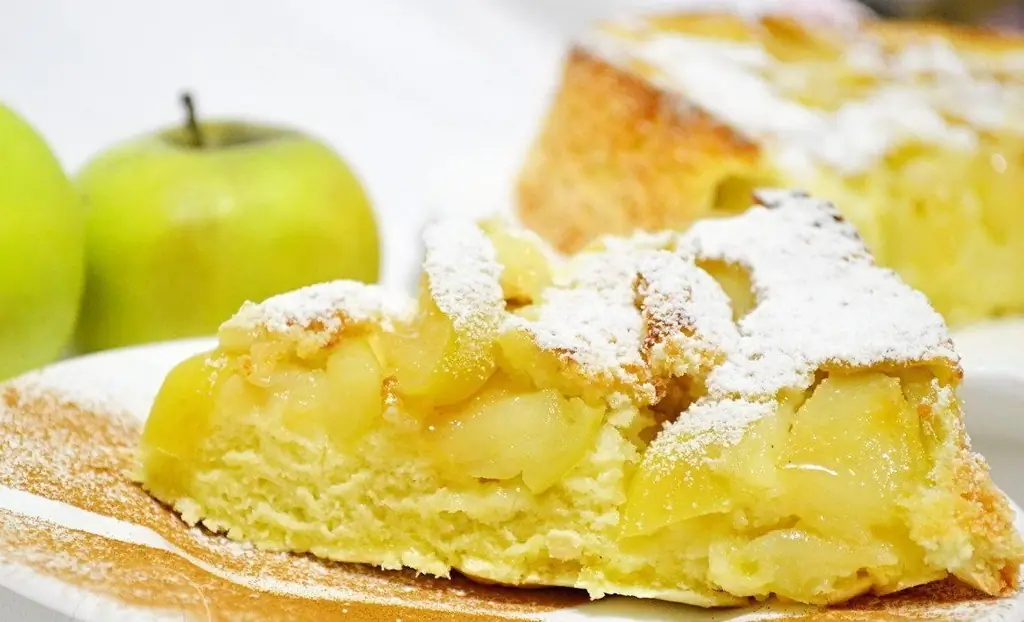
Step-by-step recipes for several types of charlotte. Essential ingredients, tips and cooking secrets. Baking in the oven, bread maker, slow cooker
Wooden Toilet For A Summer Residence With Your Own Hands - Step By Step Instructions With Photos, Drawings And Video
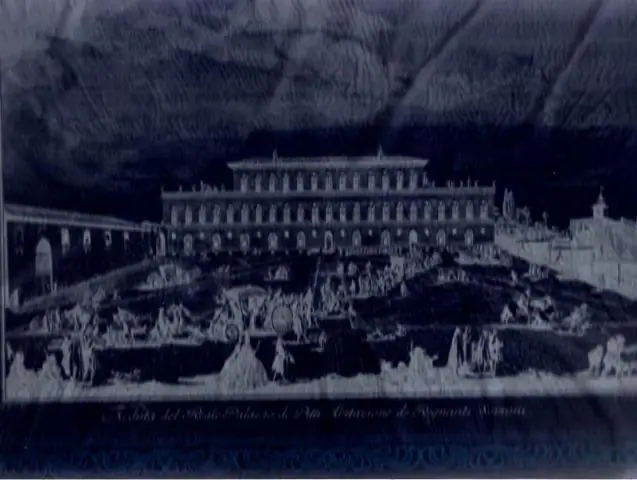
Why is wood a suitable material for building a toilet in the country? What is needed to create such a latrine, and how do you proceed? Let's figure it out
Making A Buleryan (breneran) Stove With Your Own Hands: Advantages And Disadvantages Of The Design, A Device With Drawings, Instructions With A Video, Etc
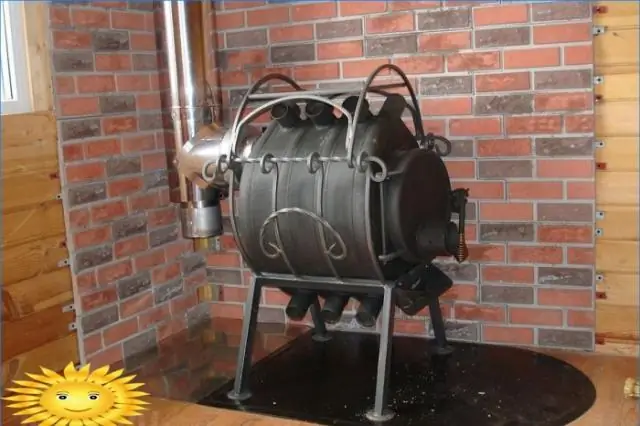
Design and principle of operation of the "Buleryan" furnace (breran). DIY recommendations with instructions and drawings. Maintenance and operation
Long-term Burning Stove (including Sawdust And Wood) With Your Own Hands: Diagram, Drawings, Etc. + Video
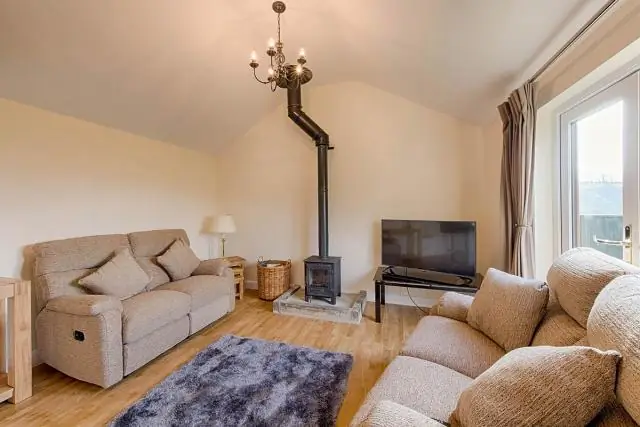
How does a long burning stove work. Production of a long-burning furnace from a gas cylinder and sheet metal. Features of operation and repair of furnaces
Diy Pyrolysis Oven: Drawings, Diagram, Step-by-step Instructions, Etc. + Video
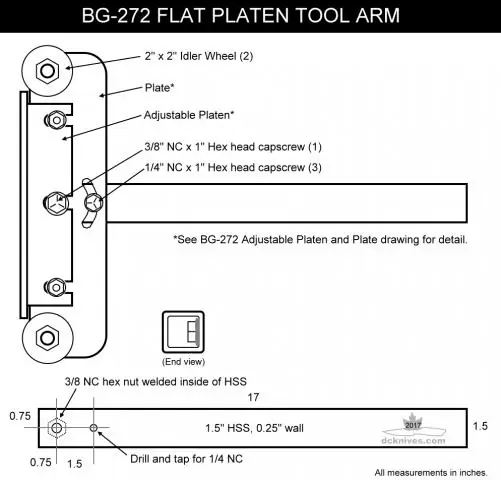
Features of the pyrolysis oven and its advantages. Types of structures, materials and drawings for self-production. Operating rules
